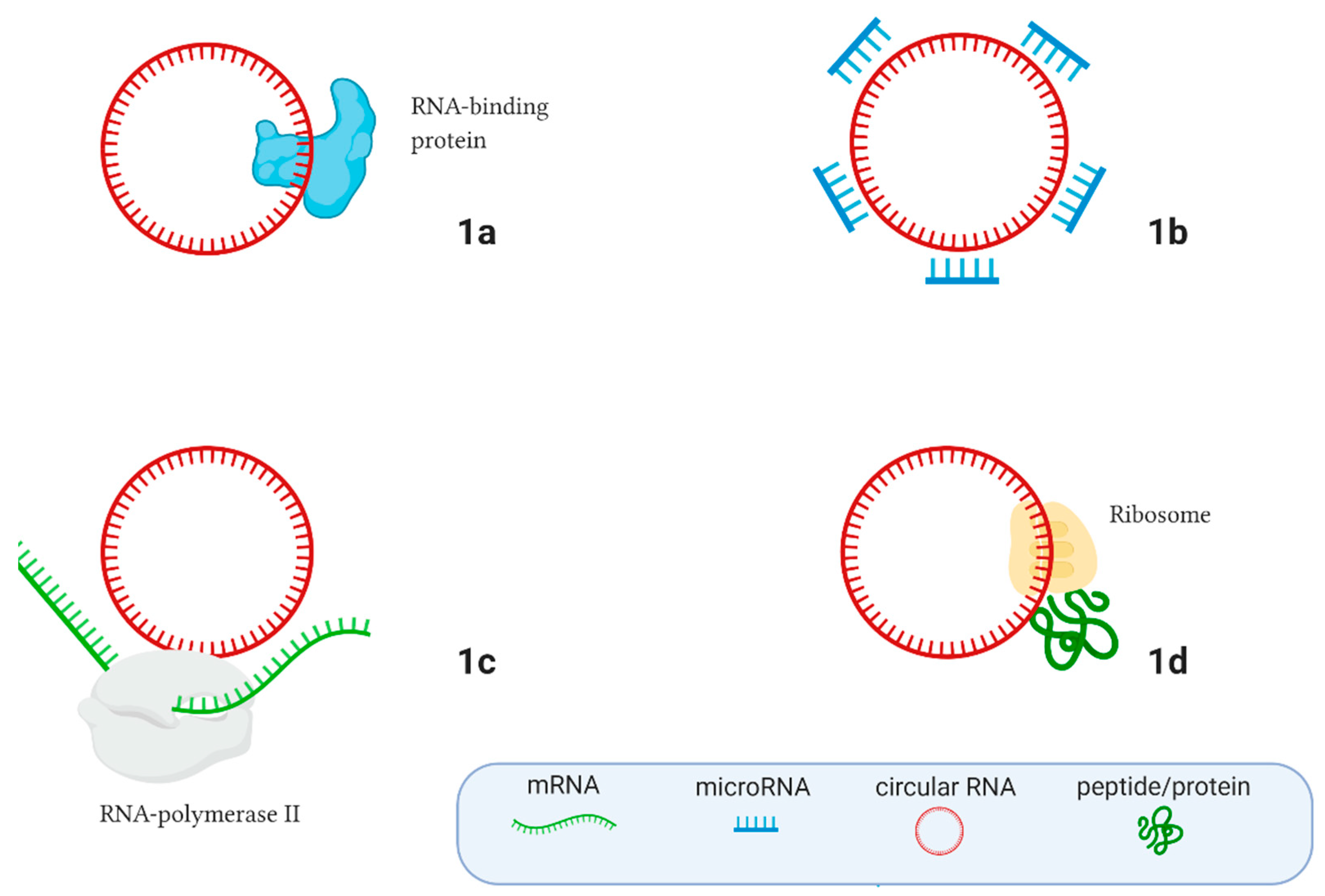Circular RNA (circRNA) is a type of single-stranded RNA which, unlike linear RNA, forms a covalently closed continuous loop, with the 3′ and 5′ ends normally present in an RNA molecule have been joined together. Because circular RNA does not have 5′ or 3′ ends, it is resistant to exonuclease-mediated degradation and is more stable than linear RNA.
Circular RNAs are highly represented in the eukaryotic transcriptome. Thousands of endogenous circRNAs have been discovered in mammalian cells. They are generated from exonic or intronic sequences of precursor mRNA.

Circular RNAs have been shown to play important roles as microRNA sponges, regulators of gene splicing and transcription, RNA-binding protein sponges, and protein/peptide translators. They function in various human diseases, particularly cancers, and may function as predictive biomarkers and therapeutic targets for cancer treatment.
Reference: Tang, X., Ren, H., Guo, M., Qian, J., Yang, Y., & Gu, C. (2021). Review on circular RNAs and new insights into their roles in cancer. Computational and structural biotechnology journal, 19, 910–928. https://doi.org/10.1016/j.csbj.2021.01.018